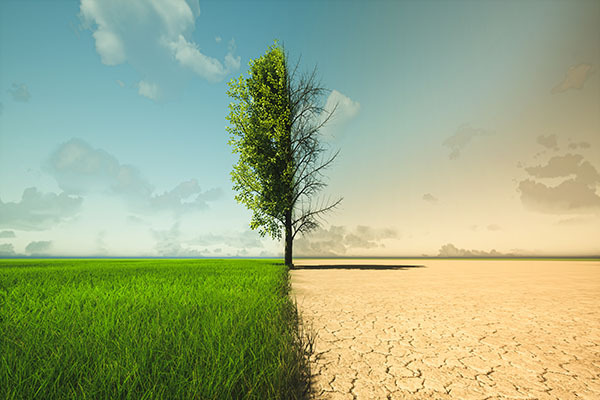
HICprevent
This award-winning blog supplements the articles in Hospital Infection Control & Prevention.
Climate Change Driving Emerging Infections
September 11th, 2023

By Gary Evans, Medical Writer
The connection between emerging infections and climate change has gone from theoretical discussions a few years past to an evidence-based phenomenon happening in real time. That said, there are multiple converging factors, and attributing all emerging infections to global warming is too broad a stroke to explain a complex issue.
There are related and contributing problems of deforestation, rapid global travel, and the movement of migrant populations, particularly from rural to urban or peri-urban environments, said Caroline Buckee, PhD, professor of epidemiology at the Harvard Chan School of Public Health.
“If you were going to design a perfect system to spread a pandemic, you would put everybody in very close proximity in cities and then connect them by global travel as much as you can,” she said in a recent webinar at the Chan school. “And that's exactly what we have. We have people in closer proximity with environments where we have a huge diversity of potentially zoonotic emergence events. We've created a system that is not only driven by climate, it’s also setting us up for increasing and worse pandemics. That's something I think about a lot.”
Primarily waterborne in coastal seas, Vibrio vulnificus bacterial infections are hardly the stuff of pandemics. But V. vulnificus thrives in warming waters, particularly brackish inner coastal waters and estuaries. There have been fatal infections this year reported as far north as Connecticut and New York.
With warming waters, the waterborne bacteria has steadily extended its habitat northward up the Eastern Seaboard. V. vulnificus infections in the Eastern United States increased eightfold from 1988 to 2018, and the northern geographic range of infections has increased about 30 miles a year over that period, the Centers for Disease Control and Prevention (CDC) reported.
”Amid increasing water temperatures and extreme weather events — heat waves, flooding, and severe storms — associated with climate change, people who are at increased risk for V. vulnificus infection should exercise caution when engaging in coastal water activities,” the CDC advised in a health alert.
Those at highest risk have liver disease or some other source of compromised immunity. The infection most often is caused by entering the water with a cut or wound, which can be beset with necrotizing fasciitis requiring urgent treatment. The infection can also be caused by consuming oysters contaminated with V. vulnificus.
While this seems a fairly clear example of climate change expanding a pathogen’s habitat to reach new human populations, there is a need for more granularity of data on the issue to truly understand and prevent it. For example, malaria transmission via mosquitos has been strongly linked to deforestation of the Brazilian Amazon, but the connection is not as clear in Africa, according to another study.
In any case, deforestation creates encroachment on animal habitats and more likelihood of a “spillover” of zoonotic infections to human populations.
“As deforestation happens, humans get closer to this huge reservoir of viruses that are in the forest in different kinds of animal species,” said Marcia Castro, PhD, chair of Department of Global Health and Population at the Chan school. “And the possibility of a new zoonosis emerging is also very high. In fact, I think we lucked out that nothing has emerged as a greater problem so far.”
For more on this story, see the next issue of Hospital Infection Control & Prevention.
Gary Evans, BA, MA, has written numerous articles on infectious disease threats to both patients and healthcare workers for more than three decades. He has been honored for excellence in analytical reporting five times by the National Press Club in Washington, DC.
